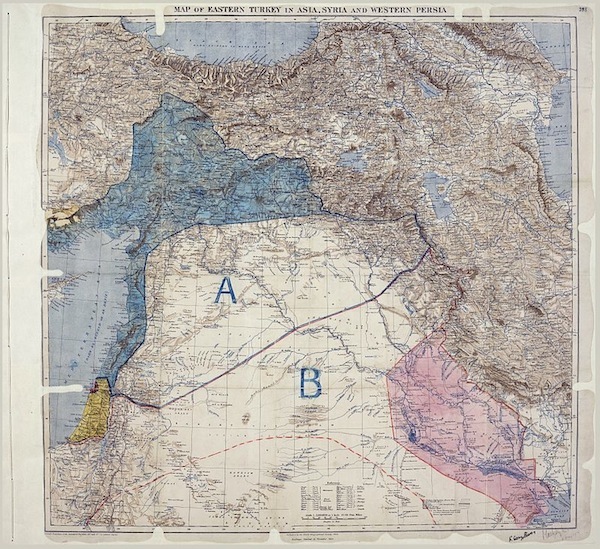
A forgotten duo is making a comeback: Sykes-Picot. In 1916 these two civil servants, one British and the other French, designed –ie, divided up– the map of the Middle East between their countries’ respective areas of influence, creating artificial states such as Lebanon, Syria and Iraq. It was part of what David Fromkin in a masterly analysis called ‘the peace to end all peace’. Those who have brought Sir Mark Sykes and François George-Picot to life again are not historians, but the leaders of ISIS (‘the Islamic State of Iraq and Syria’) when they recently labeled some recently released pictures ‘The destruction of Sykes-Picot’. What they aim for is nothing more and nothing less than the destruction of the 1916 arrangement, while Europe prefers to remain on the sidelines. The US forges ahead, wearily alone, while the two important rival powers in the region, Iran and Saudi Arabia, continue to be alert and another power, Turkey, pulls the strings it considers convenient and Israel keeps a watchful vigil over the developing drama.
Iraq has failed as a concept. Following the US invasion of 2003, which morphed into a civil war between the Shiite majority and the Sunni minority, it was impossible to build either a country or a State. The Kurds achieved their longed-for autonomy and now have 200,000 well trained men under arms, the Peshmerga. President Al-Maliki has been disastrous and has alienated the Sunni, so it is no surprise that the ‘solution’ advocated by the US and Ayatollah Al-Sistani, Iraq’s highest Shia religious authority, is to install a more inclusive leader. It has been a failure of seeing democracy as only a question of votes, disregarding the protection and integration of minorities.
And that is what underlies the collapse of the State in the face of the advance of ISIS in northern Iraq. The group has taken the place of al-Qaeda, from which it originates and from which it split off. According to some sources, it has between 7,000 and 15,000 members, insufficient to occupy the area they now dominate. This has only been possible because the Sunni part of the army, trained at exorbitant cost by the US, has refused to fight. Why die for a Shia state? The Sunnis believe in neither the state nor the government. A large part prefer the lesser evil of the Sunni Islamists. This has allowed ISIS to secure weapons, adding to the uncertainty about who is behind their funding. ISIS also has the support of other veterans groups of Ba’athists and Mujahideen.
There has also been an intelligence failure, of both the Iraqi state –if such it can be called–, which failed to see what was coming and failed to gauge the weakness of part of its armed forces and of the US, perhaps because it remains overly obsessed with signals intelligence (SIGINT) to the detriment of the human factor (HUMINT). The NSA and its universal eavesdropping cannot do everything.
The first Iraq war destroyed the country’s internal and external balance. Along with the impact of the ‘Arab spring’ it led to the war in Syria, which has now returned with a vengeance as a new civil war in Iraq. This has led to a rapprochement between the US and Iran, although Obama will not send combat troops again in significant numbers and does not want Iran to enter the fray. Washington and Tehran agree on the need to maintain a united Iraq.
Any alternative to unity, however precariously maintained, would be even worse and bloodier, at least as regards the process of changing from the old to a new order. The ease with which the ISIS forces have progressed is not the cause of Iraq’s break-up but its effect. The fact is that even if they do not reach Baghdad, this is one of those conflicts that can last for years and result in tens of thousands of deaths: ‘A long and bloody stalemate’ according to the Brookings expert Kenneth Pollack. The Western powers have their hands tied. The map drawn up by the Europeans in 1916 is under threat, while Europe remains powerless, even though its security is under threat. It has been a century of history, but history mismanaged, and it is returning with a vengeance.


